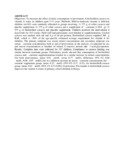| dc.contributor.author | Talsma1, Elise F | |
| dc.contributor.author | Brouwer, Inge D | |
| dc.contributor.author | Verhoef, Hans | |
| dc.contributor.author | Mwangi4, Alice M | |
| dc.contributor.author | Boy, Erick | |
| dc.contributor.author | Maziya-Dixon, Busie B | |
| dc.contributor.author | Zimmermann, Michael B. | |
| dc.contributor.author | Melse-Boonstra, Alida | |
| dc.date.accessioned | 2015-09-23T08:39:26Z | |
| dc.date.available | 2015-09-23T08:39:26Z | |
| dc.date.issued | 2015-08-14 | |
| dc.identifier.citation | Talsma, E. F., Brouwer, I. D., Verhoef, H., Mwangi, A. M., Boy, E., Maziya-Dixon, B. B., ... & Melse-Boonstra, A. (2015). Effect of Provitamin A-biofortified Cassava on Vitamin A Status of Kenyan Children: A Randomised Controlled Trial. EJNFS, 5(5): 836-837, | en_US |
| dc.identifier.uri | http://hdl.handle.net/11295/91348 | |
| dc.description.abstract | Objectives: To measure the effect of daily consumption of provitamin A-biofortified cassava on
vitamin A status in children aged 5-13 years.
Methods: Mild-to-moderate vitamin A deficient children (n=342) were randomly allocated to groups
receiving: 1) 375 g of white cassava and placebo supplement; 2) 375 g of white cassava and a
supplement of β-carotene (1,054 μg); 3) 375 g of biofortified cassava and placebo supplement.
Children received the intervention 6 days/week for 18.5 weeks. Field staff and participants were
blinded to supplementation. Cooked cassava was mashed with salt and 4 g of oil per portion.
Biofortified cassava supplied 208 μg RAE, which is ~50% of the age-specific estimated average requirement for vitamin A for children. The primary endpoint was serum retinol concentration and
secondary endpoint was serum β-carotene concentration, both at end of intervention; in the
analysis, we adjusted for sex and serum concentrations at baseline of retinol, C-reactive protein
and α1-acid-glycoprotein.
Results: Complete data were collected for 337 children. Compliance to cassava feeding was
similar between treatment groups. Preliminary results showed that consumption of biofortified
cassava and β-carotene supplementation resulted in a similar increase in retinol concentrations
(for both interventions, mean: 0.81 μmol/L versus 0.77 μmol/L; difference, 95% CI: 0.04 μmol/L,
0.00─0.07 μmol/L) but in a different increase in serum β-carotene concentration (for β-carotene
supplement group, mean: 0.25 μmol/L (95% CI: 0.17─0.33), for biofortified cassava group, mean:
0.81 μmol/L (95% CI: 0.73-0.88))
Conclusions: Provitamin A-biofortified cassava improves the vitamin A status of primary school
children in Kenya. | en_US |
| dc.language.iso | en | en_US |
| dc.publisher | University of Nairobi | en_US |
| dc.title | Effect of Provitamin A-biofortified Cassava on Vitamin A Status of Kenyan Children: A Randomised Controlled Trial | en_US |
| dc.type | Article | en_US |
| dc.type.material | en | en_US |

